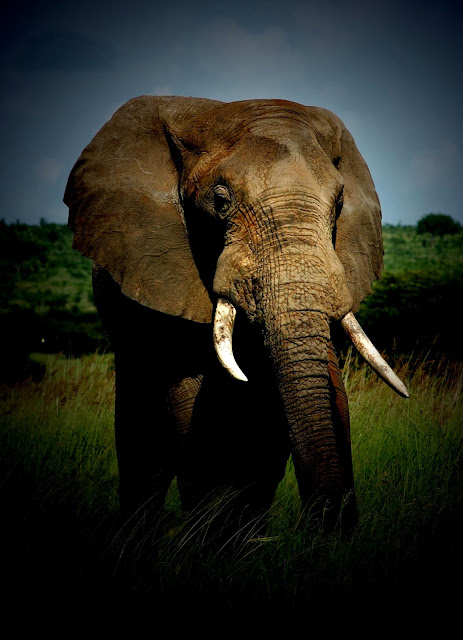 |
| A lone bull elephant, Tarangire, Tanzania. What's his life worth to a poacher, a hunter, a local community? |
Imagine a world without elephants, the giant, majestic architects that shape the African savannah.
I’m not talking about the loss of just another species, something we’ve seemingly become immune to in recent years as each new extinction is catalogued. I’m imagining a loss that will change forever a whole continent — not only how we envisage that continent, not only the ecology of a landscape, but also the very economic and social fabric of many African nations.
What price can be placed on the life of a single wild elephant? The Chinese market values a kilogram of ivory at US$7,000. With small- to medium-sized tusks weighing 20 kilograms each, that reality places at least a US$280,000 value on the head of every elephant poached in Tanzania. (Of course, the local Tanzanian who does the dirty work and poaches the elephant receives only a fraction of this amount.)
Tourist hunters and the Tanzanian Department of Wildlife that issues hunting permits value the animal far less. A 21-day hunting safari costs about $40,000. The hunter is pampered in style and in addition to an elephant is allowed to kill a lion, a leopard, and whatever other antelope or small mammal he fancies. The hunter must cough up trophy fees, paid to the Tanzanian government on a sliding scale — $8,500 for 15 to 26 kilogram tusks, $15,000 for tusks 27 to 32 kilograms, and $21,900 per tusk over 32 kilograms. So the life of the same elephant adorned with a pair of 20 kilogram tusks, worth $280,000 to poachers, is reduced to a miserly $48,500 in the world of big game hunters, who apparently kill with a clear conscience, claiming as they do that their activities help conserve African wildlife.
What about the photographic tourist who visits the Tarangire ecosystem, not to take life, but to observe and photograph the African elephant in its wild habitat? Well, it's estimated that Tarangire National Park earns more than US$64 million annually from tourists in the form of park, lodge and concession fees.* Here, the elephant population is growing at an annual rate of seven percent, the highest anywhere in Africa. With a current population of about 3100 animals, this gives each elephant an annual value of US$20,645. With a life expectancy of between 60 and 70 years, each wild elephant will generate at least US$1.35 million for the Tanzanian economy over its lifetime.
I choose Tarangire to illustrate my point because of all the national parks in Tanzania, it’s the only one that markets its large and dense elephant population. It would be safe to assume that without this elephant population, many visitors would spend their time elsewhere. And these are just the figures based on visitors to Tarangire National Park prior to 2009. They do not take into account the additional revenue generated through community based educational programs outside the park, nor the income derived for local businesses and local wages.
The greed and shortsightedness of the hunting lobby and the Tanzanian Department of Wildlife is manifold. It is the conservation of the African elephant that is inextricably linked to the economic development and long-term prosperity of African nations. In addition to the heartbreak of a world without elephants, to ignore this plain truth will only place additional burdens on Western aid and welfare programs to African nations in years to come.
* Nelson, Maliasili Initiatives, March 2009, Natural Conservationists? Evaluating the Impact of Pastoralist Land Use Practices on Tanzania’s Wildlife Economy


No comments:
Post a Comment